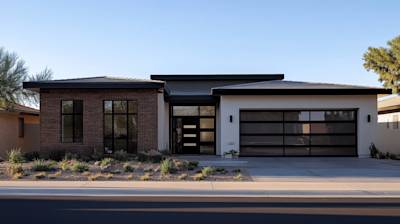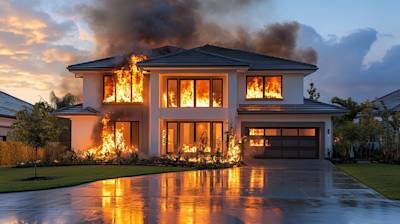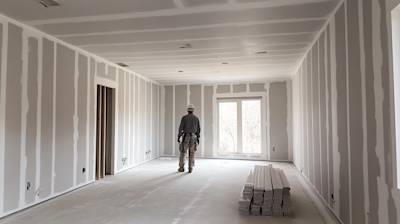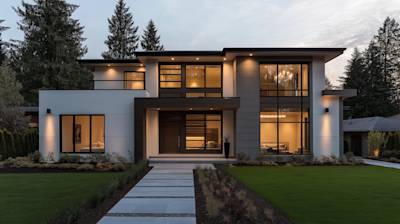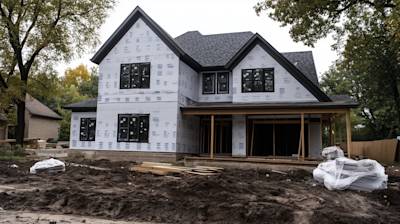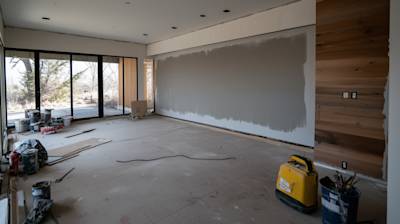If you've been researching different siding materials for your home, chances are you've come across synthetic stucco. Synthetic stucco, also known as Exterior Insulation and Finish System (EIFS), is a layered solution that provides both insulation and an appealing exterior finish. But what's so special about it? Read on to discover the many benefits of synthetic stucco. And prepare to be convinced—synthetic stucco is undoubtedly a prime choice for your next home improvement project.
1. Synthetic Stucco Delivers Superior Insulation
Probably the most significant benefit of synthetic stucco is its insulating properties. This exterior cladding involves a thick layer of foam insulation installed directly onto your home's walls. Since EIFS wraps around the entire property like a thermal blanket, it reduces energy loss, thus keeping your home warm in the winter and cool in the summer. In effect, using synthetic stucco can lead to savings on your heating and cooling bills.
2. It Offers Unmatched Durability
When it comes to siding materials, you want one that can stand up against various elements. The durability of synthetic stucco is impressive, resisting wind, rain, and even impact from flying debris. Its elastic nature allows it to expand and contract with changing temperatures without cracking—making it ideal for climates with significant temperature swings. And, unlike traditional stucco, synthetic versions are more resistant to moisture and less prone to cracking.
3. Versatility in Aesthetics
Do you have a specific look in mind for your home? With synthetic stucco, the design possibilities are virtually endless. Available in a vast array of colors and textures, it lets you customize your home's exterior to suit your personal taste perfectly. You can even mimic the appearance of other materials such as brick, stone, or timber. This flexibility makes synthetic stucco a favorite choice among homeowners and architects alike.
4. Easy and Cost-Effective Maintenance
Synthetic stucco is an extremely low-maintenance option as far as home exteriors go. It's dirt and dust-resistant, so it rarely needs more than a simple rinse with a hose to keep it looking clean and fresh. Additionally, synthetic stucco's color permeates through the entire material, ensuring it stays vibrant without the need for frequent repainting. This low-maintenance nature makes synthetic stucco a cost-effective choice in the long run.
5. Enhances Your Home's Value
Given its many benefits, it's no surprise that adding synthetic stucco to your home can increase your property value. Its aesthetic appeal, combined with its durability and energy efficiency qualities, make homes with synthetic stucco exteriors sought-after in the real estate market. And that means a higher resale value should you ever decide to sell.
If you're searching for a sturdy, efficient, and beautiful siding option, synthetic stucco is well worth considering. Its superior insulation, unmatched durability, extensive design versatility, effortless maintenance, and potential for increasing property value make it a smart investment for any homeowner. As you embark on your home renovation journey, remember—you can't go wrong with synthetic stucco.
Beyond its practical benefits, synthetic stucco allows you to express your creativity and give your home a unique touch. So why wait? Make the switch to synthetic stucco today, and start reaping these fantastic benefits!
FAQs on Synthetic Stucco
What is synthetic stucco?
Synthetic stucco is a multi-layered exterior finish that was first introduced in Europe post-World War II. It is also known as Exterior Insulation and Finish Systems (EIFS). Traditional stucco, on the other hand, is a mixture of sand, cement, and water. Synthetic stucco has a foam insulation board, a base coat, and then a finish coat, making it a particularly energy-efficient choice for building exteriors.
What are the drawbacks of synthetic stucco?
Despite its attractive benefits, synthetic stucco does come with potential downsides. It may not stand up to impact as well as traditional stucco – tree branches, balls, and other hard objects can cause damage. Additionally, it can often be more labor-intensive to install than traditional stucco. Lastly, Synthetic stucco can be prone to moisture problems if not installed correctly, which can lead to mold and mildew, and it also requires regular maintenance to sustain its appearance and performance.
How is synthetic stucco installed?
Synthetic stucco installation is a multi-step process that entails applying a layer of foam insulation board to the wall, followed by a base coat, reinforcement mesh to strengthen and prevent cracking, and lastly, the finish coat. This process provides exceptional energy efficiency to the structure. However, it has to be done very meticulously to prevent moisture from seeping into the walls.
What is the difference between synthetic stucco and traditional stucco?
While both have their merits, there are key differences. Traditional stucco consists of cement, sand, and lime, which makes it more rigid, tough, and resistant to impacts. Conversely, synthetic stucco is made of a foam insulation board, a base coat, and a finish coat, giving it notable energy efficiency, design flexibility, and lightness. It might however be prone to damage from significant impacts.
How to maintain synthetic stucco?
Overall, synthetic stucco has low maintenance requirements, but there are most certainly practices that should be observed to keep it at its best condition. Regularly wash the surfaces to keep dirt and grime away. Keep a close eye on the finish coat – any cracks or damages should be repaired promptly to prevent moisture intrusion. Furthermore, any signs of mold or mildew should be addressed immediately by professionals.
Conclusion
Synthetic stucco can be an excellent choice for doors, walls, and other parts of a structure due to its design flexibility, energy efficiency, and long lifespan. However, potential homeowners or builders should also take into account the drawbacks, such as potentially high installation labour, vulnerability to impact, and regular maintenance needs. By considering these factors, one can make an informed decision on using synthetic stucco for building projects.
Summary
Well, that wraps up a brief look at synthetic stucco and its benefits. It's a durable, cost-effective, and versatile material that can add immense value to our homes. Not only does it increase the aesthetic appeal, but it also contributes to better insulation and resists mold and mildew. It's undoubtedly a reliable solution for facelifts to properties or protecting a new construction.
Despite all its benefits, synthetic stucco isn't without drawbacks. Proper installation and maintenance play a crucial part in its effectiveness. Also, getting it incorrectly installed may lead to problems like water intrusion. But with the right techniques and professional help, you can enjoy its benefits for a very long time.
Overall, synthetic stucco is a remarkable material. Its high durability, combined with its energy-saving potential, makes it one of the best options for exterior finishes. So if you're planning to remodel your home or are considering new construction, this is definitely worth some serious consideration.
About Atlas Stucco
Located in the heart of Sacramento, CA, Atlas Stucco is your premier destination for all your stucco needs. Since our establishment, we have dedicated our resources and expertise to ensuring our customers receive the highest quality of stucco services. Our team of professionals are not only vastly experienced and skilled, but also passionate about turning your property into the aesthetic masterpiece you’ve always envisioned. Whether it's residential or commercial, new construction or stucco repair, at Atlas Stucco, we do it all with precision, excellence and a personal touch.
Tags: Synthetic Stucco, Home Exterior, Stucco Benefits,



